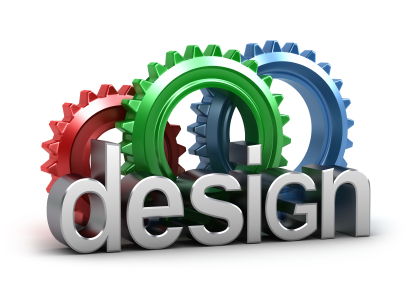Category Archives: Freelance Design
My Best Design Blog Content Development Tip

I’m sure we’ve all seen those nifty, set of to-do lists and whiz bang cure-alls for developing your business graphic design blog. I know this is true because I have downloaded a few of these articles myself, printed them, and promptly put them in my IN basket to get to later. But as client projects (and their demands) swallow up work time, it seems I rarely get to that IN basket and my design blog’s development priorities fall lower and lower on the “must do” list.
The #1 Best tip or bit of advice I can offer boils down to this—keep at it or like the proverbial turtle in the picture above (the turtle from Aesop’s fable), just keep plodding away! Developing your graphic design blog is not a sprint, it’s more like a marathon, so setting your mind to chipping away at your blog development week by week will get you a lot further than trying to get everything done all at once. You won’t get overwhelmed, since hopefully you already have your client’s work making demands on your time and can invest a few hours of your precious time per week. Remember…Time is Money.
Trust me on this… prepare yourself for the long haul and try to update your graphic design blog on a consistent basis which works out to roughly an average of four blog posts a month or one blog post a week. This works out to a two to three hour minimum investment of your time per week to your graphic design blog marketing, especially if you are a solo graphic designer. Just my idea of a great tip to get you started on the right track in 2013!
6 Reasons to Begin Blogging for Your Graphic Design Business
Most graphic designers, freelance workers or entrepreneurs know by now, that blogging is quickly becoming an important and relatively inexpensive tool for online marketing and self promotion. Back in the 90s, in the early days of internet marketing, web designers and graphic designers were busy designing and creating mostly static websites for their clients. However, blogging and the use of blogs has grown exponentially with the development and refining of blogging platforms such as Blogger, Tumblr, WordPress, Joomla and Drupal.
These blogging platforms have made it much easier to develop and set up a website (or internet presence) for a variety of purposes without requiring advanced technical and programming knowledge. According to Technorati (in their annual 2011 State of the Blogosphere Report), 3 million blogs come online per month!
When blogging became popular, around July of 2004, there were about 3 million blogs online and as of the end of Dec 2011, there were approximately 178 million blogs on the internet! Please see chart below, designed by Invesp. Read the rest of this entry
How Much Does A Graphic Designer Make?
According to the United States Bureau of Labor Statistics (BLS), graphic designers made an annual median wage of $48,690 per year as of May 2011. To clarify what BLS’ salary rate means “the median wage is the wage at which half the workers in an occupation earned more than the base amount quoted and half earned less.”
So, using the above quoted figure half of the graphic designers in the United States made less than $48,690 (that works out to $23.41 hourly rate) per year in 2011 and 50% made more. The lowest 10 percent earned less than $26,200, and the top 10 percent earned more than $77,370. In 2010, about 29 percent of graphic designers were self-employed. Read the rest of this entry
7 Ways to Generate New Client Leads or Freelance Work from Your Local Business Community
As a freelance graphic designer, it’s just as vital to set up different sources for obtaining or generating new client leads as it is setting up your online portfolio or Linked In profile. Too often graphic designers may look for larger clients via online resources or online job boards, when they can prospect for potential clients in their own neighborhood. The following are a few tips on how to jump start your marketing efforts.
1) Join your local Chamber of Commerce and attend a few of their events in order to promote your services.
When you attend these events make sure you take your printed business card, that has vital information about your blog, website or online portfolio. Get ready with a 15 second “elevator speech” describing what services you offer. Don’t be boring and answer the question, “What do you do for a living?” with a boring, “I’m a graphic designer”. Try to phrase your answer with information that lets your potential client know how you can solve their problems.
2) Set up your business information on Google Places or local online business directories.
Make sure you include as much information about your graphic design business. If you are a graphic designer that works out of your home, set up a mailbox and use the address as your business address and communicate with your clients via your phone or online website or blog. Take advantage of these free or low cost local directories
3) Check out Craig list’s listings for your city.
Yes, your competition is probably doing the same thing but sometimes you’ll have the skill set or experience that your competition doesn’t have and thus you’ll get hired. With a small investment of time on a consistent basis, this habit may reap you a client or two that will be a source of additional business.
4) Keep in touch with local related freelancers ( especially copywriters) that can refer you work.
Treat good referral freelance associates like gold, offering them either bartered services, (i.e. design their print collateral) or a fee for referring work.
5) Ask if you can place your business cards, rack cards and other marketing material in local business stores.
Use this technique with related businesses or businesses you have developed a rapport with. It’s possible your local favorite drycleaner could be the one who will be willing to post your business adverts!
6) Obtain a local business directory from your local business chamber of commerce and mail promotional postcards to prospective clients in your community that could use your services.
Contact a local printing house that does not have an in house graphic designer and determine if they would refer work to you. Be prepared to send some samples of your work or refer them to an online portfolio or website.
7) Keep in touch with past clients and always reward your clients with a referral fee , or generous discount, if they refer any business to you.
Make sure you view your past satisfied clients like gold, and don’t neglect them. These satisfied clients are a source for potential new business as they can vouch for your reliability and expertise!
Do you have any local business marketing ideas?
The Tax Man Cometh– Managing Your Finances as a Freelance Graphic Designer
 When April 15th rolls around, there are many citizens (in the United States)that are probably breaking out in a cold sweat just about now, since April 15th represents the deadline for filing your income taxes. If this syndrome occurs for the regular employee at a regular 9 to 5 job, you can bet your bottom dollar (pun intended) that you might be developing additional symptoms , if you are a freelance graphic designer or independent contractor. Why? Simply, because independent contractors and/ or freelance graphic designers are indicative of a new and growing type of workforce that earn their money via clients, contracts, customers and assignments and other variable income and not a set weekly paycheck.
When April 15th rolls around, there are many citizens (in the United States)that are probably breaking out in a cold sweat just about now, since April 15th represents the deadline for filing your income taxes. If this syndrome occurs for the regular employee at a regular 9 to 5 job, you can bet your bottom dollar (pun intended) that you might be developing additional symptoms , if you are a freelance graphic designer or independent contractor. Why? Simply, because independent contractors and/ or freelance graphic designers are indicative of a new and growing type of workforce that earn their money via clients, contracts, customers and assignments and other variable income and not a set weekly paycheck.
In fact, according to the Freelancers Union, an advocacy group for America’s independent work force, freelancers, part-timers, consultants and similar jobs constitute about 30% percent of the nation’s workforce. And that number is likely to grow, in the wake of new communication technologies and the down-sizing and right-sizing that is occurring at many corporations during this global economic downturn. While these changes are creating new opportunities or job descriptions for many people, managing your finances as a freelance graphic designer or independent contractor becomes doubly challenging and sometimes problematic. And it is especially challenging when most of the financial books available at the bookstore or online at Amazon are geared for designers or others working at a traditional 9 to 5 job.
This was a problem I encountered in my own experience. Although I had always done freelance work, even as a fulltime employee, I wasn’t prepared for the financial management challenges ahead when I was laid off and fulltime freelance graphic design became my primary source of income. There are a whole host of new financial activities, tasks and present and future budget planning that one needs to know as a freelance graphic designer and are rarely taught or I should mention these financial tasks are rarely addressed at design school.
What Does A Graphic Designer Do?
The dictionary defines a graphic designer or graphic artist as one who specializes in the art or profession of visual communication that combines images, words, and ideas to convey information to an audience, especially to produce a specific effect. And while this is a broad definition of what graphic designers do, I prefer the definition of a graphic designer as a person who specializes in visual communication through a skillful combination of text and pictures in advertisements, magazines, books, etc.for print, the web and other media.
But the most awesome description (in my opinion), was coined by the Walt Disney Company with the term “imagineers“.
According to Wikipedia, “The term Imagineering, a portmanteau, was popularized in the 1940s by Alcoa to describe its blending of imagination and engineering, and was adopted by Walt Disney a decade later to describe the skill set embodied by the employees of WDI, known as Imagineers.
Imagineering is responsible for designing and building Disney theme parks, resorts, cruise ships, and other entertainment venues at all levels of project development. Imagineers possess a broad range of skills and talents, and thus over 140 different job titles fall under the banner of Imagineering, including illustrators, architects, engineers, lighting designers, show writers, graphic designers, and many more.”
The internet and the computerization of traditional design tools has vastly changed the skill set and job tasks of what a commercial graphic designer traditionally used to do. The web has opened a whole new field in design that is suited specifically for this medium rather than traditional print media, although both skills sets are still used by many graphic designers.
Read the rest of this entry
What Does A Video Editor Do?
A Video Editor makes his (or her) living by using digital video equipment and software to edit the post production work of film or video production, usually referred to as post-production work, (the work that is completed after all video or film has been shot, narration completed and sound tracks accumulated).
Video editing work has mainly been associated with the Film, Television and Broadcasting industries where most video editors are employed either as employees of post-production houses or work as freelance workers and their work or duties are more specialized to the task they perform for the Film and Broadcasting industry such as film, sound or music editors. Read the rest of this entry






